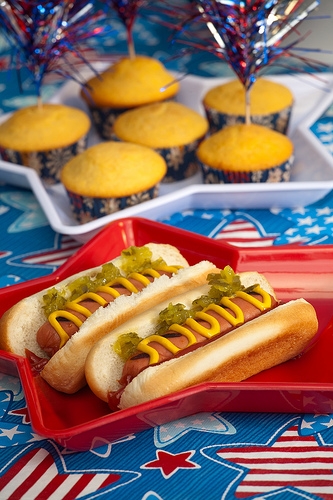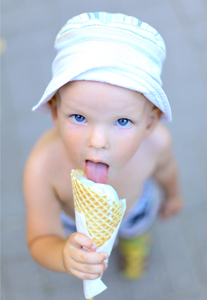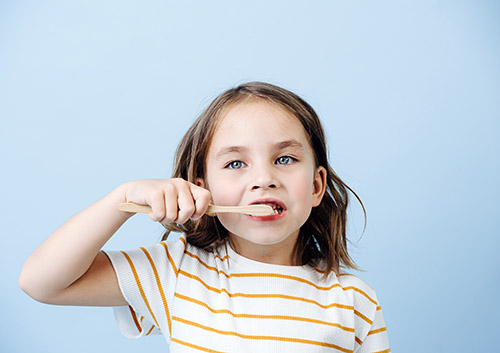
Happy Independence Day from Dr. Iyer and team! The Fourth of July celebrations in America may have changed a lot over the years, but there is no doubt that we Americans love to celebrate the anniversary of our country’s independence! Today we’re devoting the Dentistry 4 Kidz blog to some fun facts about the Fourth!
No matter how your family chooses to celebrate the Fourth, stay safe, take precautions, and don’t forget to brush after your fabulous Fourth feast!

Concerned parents often ask Dr. Iyer about which kinds of snacks are best for a child’s teeth. While most know that candy isn’t always the best choice, many parents are confused about which kinds of after-school snacks can actually be beneficial for teeth. Left to their own devices, children might pick the sugary snack that comes in colorful packaging. There are, however, choices that are much better for your child’s teeth.
Go Natural
The foods that are best for your children’s teeth are also the best for their overall health. Choosing whole foods, such as fruits and vegetables, is always the best option for snacks. Try sticks of celery and let your kids dip it into all-natural peanut butter, or a juicy and crunchy apple cut into wedges.
Lean Proteins
Lean protein, such as chicken breast, fish, turkey, and lean cuts of pork also make good snacking options. For the best overall health, avoid giving your child a lot of lunch meats, because such products are often higher in sodium. However, these proteins are also low in sugar, which is always a preferable choice when it comes to teeth.
Avoid Packaged Foods
Sugars are unhealthy partly because they stick more readily to the surface of the teeth. Even foods that appear to be healthy, such as many brands of granola bars, can in fact be loaded with hidden sugars. Sugar can also be found in higher concentrations in dried fruit, honey, and syrups. The rule is that if a foodstuff has been altered in any way from its original state then there are perhaps better choices.
Beverages
Drinks are another murky area. Parents often presume that fruit juices are an acceptable beverage when in reality many of them are loaded with excessive sugar as well. The best beverages for your child’s teeth are water and low-fat milk. Milk has the added benefit of containing calcium, which is highly beneficial for the bone structure that supports the teeth.
An apple a day might keep the doctor away, but it is also a great snack to keep teeth healthy. The next time your children are looking for an after-school snack, guide them toward healthier, low-sugar options that are beneficial to their overall health and their teeth.

We’ve all learned a lot about staying healthy lately. As a parent, you give good advice about avoiding germs in public places, cleaning things that get touched a lot like phones and keyboards, and learning the best way to wash hands. These small daily habits can have a big effect on your child’s health.
And since you’re already taking care of your little one by making sure they brush at least twice a day, we have some good advice for small habits which can make their toothbrush even cleaner and brushing even healthier.
Brushing Habits
Don’t let germs hitch a ride on your child’s toothbrush before they even begin brushing! Make sure their hands are clean before they start, and rinse off the toothbrush before they put it in their mouth.
After brushing, be sure your child rinses their brush carefully to get rid of leftover toothpaste and bits of food. Also, clean the toothbrush holder regularly to get rid of germs and bacteria.
And while we’re talking about germs, how about . . .
Most toothbrushes live in the bathroom, where we also find—the toilet. Every time we flush, invisible bacteria and particles fly through the air. And while that might not make you sick, it’s still pretty gross. Closing the lid before you flush helps keep your family’s toothbrushes—and bathroom—cleaner.
Keeping a toothbrush in a dark, wet environment is the perfect way to help bacteria grow. Instead of putting a wet toothbrush in a case, let it air dry standing heads up after use. Give it a shake first for a head start on drying out.
We’re not talking about sharing a brush, which you would never do. We’re talking about sharing space. If your child’s brush touches other brushes in a toothbrush holder, it’s probably sharing germs. Toothbrushes shouldn’t be too close to other toothbrushes, no matter how close you are to the other brush’s owner!
Finally, no matter how well your child takes care of their toothbrush, there comes a time when you should let it go. After three or four months, bristles become frayed and worn out. This means the brush won’t remove plaque as well as it used to. And to be on the safe side, it’s a good idea to replace a brush if your child has been sick.
Keeping your child’s teeth and mouth healthy is one very important way to keep their whole body heathy and happy. Talk to Dr. Iyer at our Wichita Falls, TX office to learn more about simple habits for healthy teeth!

What a milestone! The transition from bottle to sippy cup is one of baby’s first steps toward toddler independence. And like all first journeys, some helpful guideposts come in handy. That’s why Dr. Iyer and our team have several recommendations to help you navigate this transition, making sure your baby’s dental health is protected along the way.
Choosing a Sippy Cup
Sippy cups are often a parent’s first choice for this big step in baby’s development. While sippy cups offer a variety of child-safe materials, lively colors, and comfortable handle options, the feature of interest from a dental perspective is lid design.
Sippy cups curb spills because their lids don’t allow liquids to flow out freely, ensuring that drinks make it into baby’s mouth instead of onto furniture or floor. Cup lids might incorporate:
Which design is best? For short periods, any of these designs can work for you. Over long periods, spouted cups could have the same effects as prolonged thumb-sucking and pacifier use, potentially affecting a child’s tongue positioning, tooth alignment, bite, and speech development. Your dentist will be able to suggest which cups are best for your child’s dental health both short and long term.
What to Put in a Sippy Cup
Once your baby has begun drinking from a cup, it should only hold tooth-friendly drinks.
Help Prevent Tooth Decay
Just like adults, babies can suffer tooth decay, too—and for the same reasons. The bacteria in plaque use the sugars found in our diets to create acids, and acids erode tooth enamel.
When a toddler totes a sippy cup around all day, even filled with healthy drinks, those baby teeth are constantly exposed to the natural sugars found in breast milk, formula, and, for older children, milk. Drinks with more or added sugars, such as juices or sweetened drinks, cause more damage to tooth enamel. Use a sippy cup wisely:
And, while we’re talking about healthy teeth, please don’t let your child toddle around with a sippy cup. A fall while drinking can injure a baby’s mouth and teeth.
Partner with Your Child’s Dentist
The journey from baby to toddler can seem overwhelming sometimes for both you and your child, but you have expert help available! It’s a good idea to make a first dental appointment at our Wichita Falls, TX office sometime between the appearance of the first baby tooth and your child’s first birthday. This initial visit is an opportunity for Dr. Iyer to:
Used properly, sippy cups can be a helpful transition on your child’s journey from bottle to cup, and from baby-who-relies-on-you-for-everything to take-charge-toddler. Dr. Iyer and our team are an ideal guide as you and your child chart this path together.